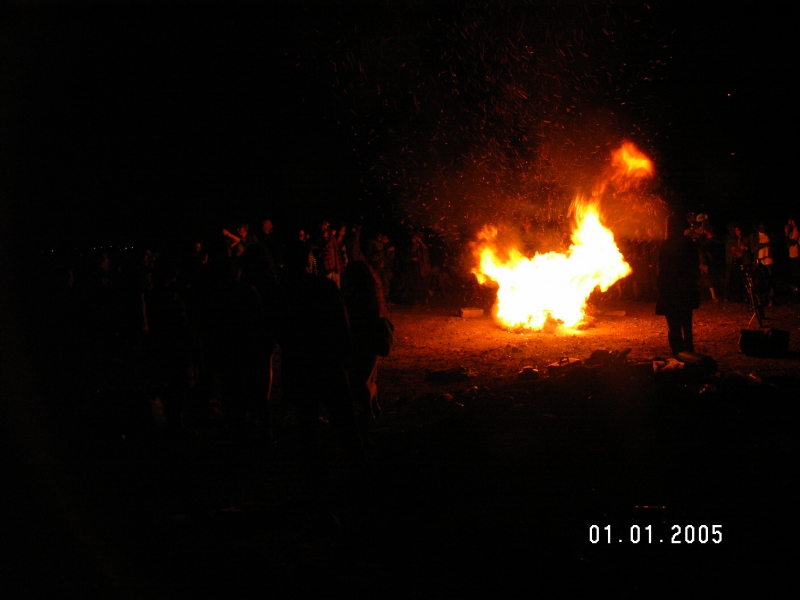Taken from: https://www.indybay.org/newsitems/2013/09/30/18744120.php

People trickled in slowly, on 'bulb time', to the potluck on the neck of
the Albany Bulb. Food from East Bay Food Not Bombs, alongside
contributions from others, were laid out on a table. On that table hung a
banner that read "Defend the Bulb" with the "n" doubling as a squatter's
symbol. The food was not only plentiful, it was delicious.
As folks ate, they swapped stories about the bulb. Some people talked
about walking their dogs, others about the logistics of having to carry
all potable water to their campsite. Some discussed the sculptures, others
broke down the finer points of graffiti style present on the bulb. Those
at the event were from all walks of life, people who might not have
interacted otherwise. Everyone agreed about the importance of "sharing
the bulb," of "keeping it how it is" and of the personal importance of the
place to them. The bulb residents mingled with the supporters, joking and
eating together. One resident had just found a gopher snake. It twisted
around her arm as kids came up to pet it.
People announced
a camp-out on October 2nd
as a practice run before
the eviction is imminent. It was requested that people bring water, both
for themselves and for sharing, and camping gear. The evening of the
October 2nd gathering will also be a time when people come together to
clean trash from the bulb. That action was suggested both by the residents
as a way of helping them with things they do everyday. It was also
suggested by others as a way to demonstrate that the Bulb is
self-regulating and in no way needs city or state intervention. From here,
the discussion diverged in many directions. People clearly had many
different ideas of what would be the best way to defend the space. Rather
than let these differences become division, let's open up a wide space of
resistance. Many of the suggestions are not mutually exclusive. While a
good deal of respect for the residents and their wishes is warranted, a
wide range of practices and perspectives can coexist in the struggle to
defend autonomous space at the Bulb.
Around sunset, everyone walked back to the Bulb amphitheater to listen to
acoustic music. Some bands were invited and others just showed up--the
whole evening came together organically. A large campfire was started, fed
with last year's Christmas trees. After a folk punk set by a Danny Discord
(Modesto, CA), a string band played a song about the Bulb and the sense of
freedom people feel there. Everybody sang along. Blackbird Raum played
well after dark at the south end of the amphitheater. People danced,
tripped over chunks of sidewalks and screamed along with the band.
Enjoying the space, making friends around the campfire, listening to
acoustic music together--sharing these experiences helped to connect
people to that space.
Outside of the residents and their legal team, substantive resistance to
the current efforts to evict the Bulb residents and manicure the space for
"passive recreation" is still forming. The event on Saturday was an
opportunity for people pissed off by the current plans to meet each other
and hear updates about the situation. These conversation will continue at
the October 2nd campout. Come to the campout, stayed tuned for future
announcements and, most importantly, find your own methods in the defense
of this wild autonomous space.
The sun lowered towards the Marin headlands as everyone gathered into the
cove (the stepped concrete plaza at the neck of the bulb) to discuss the
current situation at the bulb and what can be done. One man, there with
his two daughters and their dog, spoke spontaneously to open the meeting.
He talked about the importance of having wild space and of how his
experiences at the bulb over the years have moved him deeply. The legal
team came to the meeting with a very interesting announcement. An
agreement was reached that will give residents a 7-day warning before they
are evicted. Participants in the assembly thought that a week is enough
time to plan and execute a response to the threat of an eviction.






